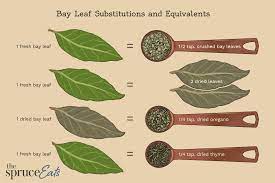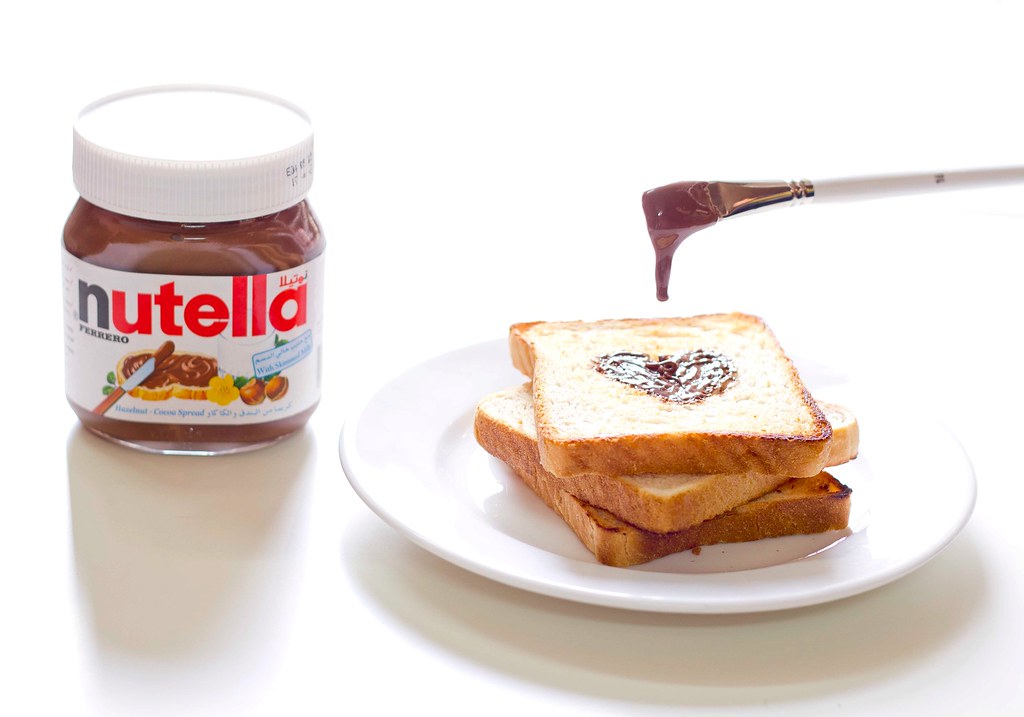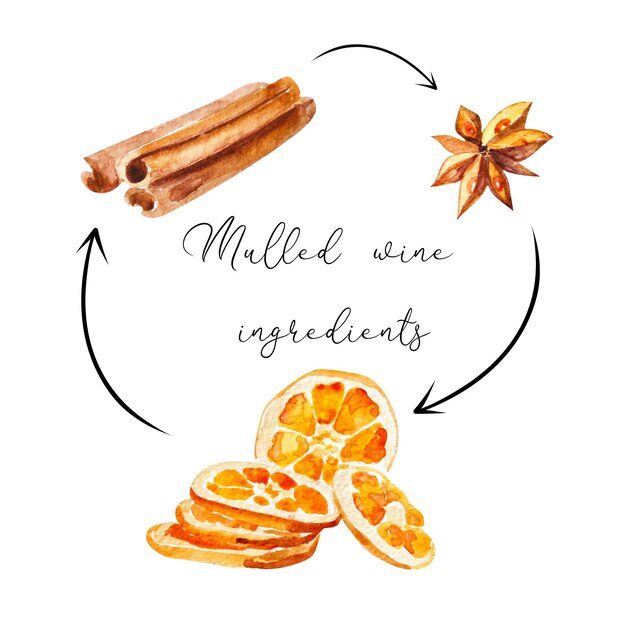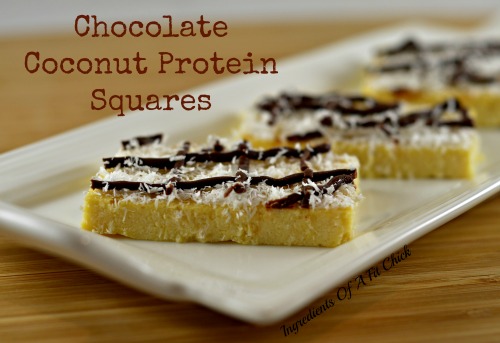Best Alternatives to Bay Leaf – Enhance Your Recipes with These Flavorful Substitutes
Bay leaves are a popular ingredient in many recipes, known for their aromatic and savory flavor. However, if you find yourself without bay leaves in your pantry, don’t worry! There are several excellent substitutes that can enhance your recipes and bring out similar flavors.
1. Thyme: Thyme is a herb commonly used in European and Mediterranean cuisines. It has a similar flavor profile to bay leaves, with hints of mint and earthiness. Substitute one teaspoon of dried thyme for every bay leaf called for in your recipe.
2. Oregano: Oregano is another versatile herb that can be used as a substitute for bay leaves. It has a slightly more pungent and robust flavor compared to bay leaves, so adjust the amount accordingly. Start with half a teaspoon of dried oregano to replace one bay leaf.
3. Basil: If you’re looking for a milder substitute, basil can be a great option. It has a slightly sweet, peppery flavor that complements many dishes. Use one teaspoon of dried basil per bay leaf in your recipe.
4. Marjoram: Marjoram is a herb that belongs to the same family as oregano and has a similar flavor profile. It has a sweeter and more delicate taste compared to bay leaves. Use half a teaspoon of dried marjoram to replace one bay leaf.
Note: Remember to adjust the amount of substitute herbs according to your taste preferences. It’s always best to start with a smaller amount and gradually add more if needed.
With these substitutes, you can still achieve delicious and flavorful dishes even without bay leaves. Experiment with different herbs and find the ones that work best for your recipes. Happy cooking!
Dried Thyme: Aromatic and Flavorful Alternative
Dried thyme is a fantastic substitute for bay leaves when it comes to enhancing the taste of your dishes. This aromatic herb possesses a unique flavor that adds depth and complexity to various recipes, making it an excellent option to replace bay leaves.
Thyme is a popular herb in Mediterranean cuisine and is often used in soups, stews, sauces, and marinades. It has a slightly minty and earthy flavor profile with hints of lemon, making it a versatile herb that pairs well with a wide range of ingredients.
When using dried thyme as a substitute for bay leaves, it’s important to keep in mind that thyme is more potent in terms of flavor. Therefore, it’s advisable to use it in smaller quantities to avoid overpowering your dish. A general rule of thumb is to use approximately half the amount of dried thyme compared to what your recipe calls for bay leaves.
One of the advantages of using dried thyme is its easy availability. You can easily find it in most grocery stores, either in the spice aisle or the fresh herbs section. It also has a long shelf life, making it a convenient option to have on hand for those times when you run out of bay leaves.
Furthermore, dried thyme offers various health benefits. It contains several essential nutrients and antioxidants that can help boost your immune system and improve digestion. Thyme is also known for its antimicrobial properties, which can assist in fighting off infections.
Incorporating dried thyme into your recipes is simple. You can either add it directly to your dishes while cooking or infuse it in liquids by tying it in a cheesecloth or using a tea infuser. Remember to remove the thyme before serving your dish to prevent any unpleasant texture.
In conclusion, dried thyme is a flavorful and aromatic alternative to bay leaves. Its unique taste and versatility make it a great option to enhance the flavor of your recipes. Whether you’re making a hearty stew or a savory sauce, dried thyme is sure to be a delicious substitute that will leave your taste buds satisfied. Give it a try and experience the wonderful flavors it brings to your dishes!
Dried Oregano: Versatile Herb for Various Dishes
Dried oregano is a versatile herb that can be used in a variety of dishes, making it a great substitute for bay leaves. This fragrant herb adds a depth of flavor and aroma to your recipes, enhancing the overall taste of your dishes.
With its strong and distinct flavor, dried oregano works well in both savory and slightly spicy dishes. It is commonly used in Italian, Greek, and Mediterranean cuisines, where it adds a unique and authentic taste. From pasta sauces and soups to marinades and roasted meats, dried oregano can bring out the flavors in your dishes.
One of the best things about dried oregano is its long shelf life, allowing you to always have it on hand to use as a bay leaf substitute. This herb is easy to store and can retain its flavor for a long time, making it a convenient choice for any home cook.
When using dried oregano as a substitute for bay leaves, keep in mind that it has a stronger flavor, so you may want to use it in smaller quantities to avoid overpowering your dish. Start by adding a small amount, taste the dish, and adjust the seasoning as needed.
If you’re looking for a specific dish to try with dried oregano, consider making a classic Italian tomato sauce. This herb pairs perfectly with tomatoes and other herbs like basil and thyme, creating a robust and flavorful sauce that can be used in pasta dishes, pizzas, and more.
In addition to its culinary uses, dried oregano also offers potential health benefits. It contains antioxidants and has been associated with anti-inflammatory properties. However, it’s important to note that these potential benefits come from consuming oregano in larger amounts, such as in the form of supplements, rather than the small amounts typically used in cooking.
Overall, dried oregano is a versatile herb that can be used as a substitute for bay leaves in a wide range of dishes. Its strong flavor and long shelf life make it a valuable addition to any kitchen, allowing you to enhance your recipes without bay leaves.
Dried Basil: Fragrant Substitute for Bay Leaf
If you are looking for a fragrant and flavorful substitute for bay leaf, dried basil is a great option to consider. Basil is a popular herb in Mediterranean and Italian cuisine, known for its strong aroma and distinctive taste. While not identical to bay leaf, dried basil can add a similar depth of flavor to your dishes.
Dried basil is made by drying the leaves of the basil plant. This herb has a slightly sweet and peppery flavor with hints of mint and clove. It is most commonly used in tomato-based sauces, soups, stews, and meat dishes. Adding dried basil to your recipes can give them a rich and aromatic taste.
When using dried basil as a substitute for bay leaf, keep in mind that the flavors are not exactly the same. Bay leaf has a more herbal and earthy taste, while dried basil has a brighter and more pronounced flavor. However, both herbs have a similar ability to enhance the overall taste of the dish.
To use dried basil as a substitute for bay leaf, simply crumble the dried leaves and add them to your recipe. Start with a small amount and adjust to your taste. Remember that dried basil is more potent than fresh basil, so you may need to use less of it in your dishes.
In addition to its flavor, dried basil also offers several health benefits. It is a good source of antioxidants and vitamins A, C, and K. Basil is also believed to have antimicrobial and anti-inflammatory properties, making it a valuable addition to your diet.
Overall, dried basil can be a fragrant and flavorful substitute for bay leaf in a variety of recipes. Experiment with this versatile herb and discover new ways to enhance your dishes. Enjoy the rich aroma and taste of dried basil in your favorite meals.
Marjoram: Milder Option to Add Depth of Flavor
When it comes to finding a substitute for bay leaf, marjoram is an excellent option. Marjoram is an aromatic herb that belongs to the same family as oregano and mint. It has a milder flavor compared to bay leaf, but it can still add depth and complexity to your recipes.
Marjoram has a slightly sweet and floral taste with hints of citrus. It pairs well with a variety of dishes, including soups, stews, sauces, and roasted meats. Its delicate flavor allows other ingredients to shine while still providing a pleasant aroma and taste.
Using Marjoram as a Substitute for Bay Leaf
When using marjoram as a substitute for bay leaf, it’s important to keep in mind that the flavor profile will be different. While bay leaf has a strong and distinctive flavor, marjoram offers a more subtle taste. Therefore, you may need to adjust the amount of marjoram used in your recipe to achieve the desired flavor.
One way to use marjoram as a substitute for bay leaf is by adding it to your dish during the cooking process. You can add a few sprigs of fresh marjoram or use dried marjoram leaves, depending on your preference. Remember to remove the marjoram before serving to prevent any overpowering flavors.
Benefits of Using Marjoram
In addition to adding depth of flavor to your recipes, marjoram offers various health benefits. It is rich in antioxidants, vitamins, and minerals, which can help boost your immune system and protect against chronic diseases.
Furthermore, marjoram has antimicrobial properties that can help fight against harmful bacteria and viruses. It also aids in digestion and can provide relief from digestive issues such as bloating and indigestion.
Overall, marjoram is a milder substitute for bay leaf that can enhance the flavor of your dishes without overpowering them. Whether you’re cooking a hearty stew or a flavorful sauce, marjoram can be a great addition to your culinary repertoire.
Dried Savory: Lesser-Known Herb with Similar Taste
Dried savory is a lesser-known herb that can be used as a substitute for bay leaf to enhance the flavors of your recipes. It has a similar taste profile to bay leaf, but with its own unique twist. This herb is often used in Mediterranean and European cuisines, adding a savory and slightly peppery flavor to dishes.
Like bay leaf, dried savory is typically used to add depth and complexity to soups, stews, sauces, and marinades. It can also be used in bean dishes, meat rubs, and herb blends. While it may not be as commonly found in spice racks as bay leaves, dried savory can be easily sourced from specialty spice shops or online retailers.
Flavor Profile
Dried savory has a warm and aromatic flavor that is often described as a combination of thyme and pepper. It has a slightly bitter undertone, making it an excellent complement to rich and hearty dishes. The herb’s flavor intensifies when dried, so a little goes a long way.
Usage and Storage
To use dried savory, simply add it to your recipes during the cooking process. It is best to crush or crumble the leaves before adding them to your dish to release their full flavor. As with bay leaf, dried savory is not typically consumed and is usually removed before serving.
Dried savory should be stored in an airtight container in a cool, dark place to maintain its flavor and aroma. It can be kept for up to a year, although its flavor may start to diminish over time. If your dried savory starts to lose its potency, it’s time to replace it.
Important Note:
While dried savory can be a great substitute for bay leaf, keep in mind that it has a slightly different flavor profile. It may not be the ideal option for recipes where the distinct taste of bay leaf is desired. However, if you’re looking to experiment with new flavors or simply don’t have bay leaf on hand, dried savory can be a fantastic alternative.
Overall, dried savory is a lesser-known herb that can be used as a substitute for bay leaf. It adds a savory and slightly peppery flavor to your dishes, making it a versatile option for a range of recipes. Give this herb a try and discover a new dimension of flavors in your cooking!
Herbes de Provence: Blend of Herbs for a Unique Flavor
If you’re looking to take your recipes to the next level without bay leaves, Herbes de Provence is the perfect substitute. This traditional French herb blend is bursting with flavors and can add a unique twist to your dishes.
Herbes de Provence is a combination of dried herbs that are commonly found in the Provence region of France. While the exact ingredients can vary, this blend typically includes thyme, rosemary, savory, marjoram, and oregano. These fragrant herbs come together to create a versatile mixture that can enhance a wide range of recipes.
One of the great things about Herbes de Provence is its ability to add complexity and depth to both savory and sweet dishes. The thyme and rosemary provide a subtle earthiness, while the savory and marjoram add a touch of sweetness. The oregano brings a hint of spiciness, making this blend a well-rounded combination of flavors.
Whether you’re seasoning a roast, flavoring a soup, or baking bread, Herbes de Provence can elevate your dish to new heights. Sprinkle it on vegetables before roasting for a burst of herbal goodness, or add it to a marinade for a subtle yet delicious twist. The possibilities are endless with this versatile herb blend.
When using Herbes de Provence as a substitute for bay leaves, keep in mind that it is more potent in flavor. Start with a smaller amount and adjust to taste, as you don’t want to overpower your dish. Additionally, since Herbes de Provence is a dried herb blend, it is important to crush the herbs before using to release their full flavors.
So, if you’re searching for a flavorful alternative to bay leaves, look no further than Herbes de Provence. With its unique blend of herbs, this versatile seasoning can bring a taste of the French countryside to your recipes.
“FAQ:” Bay leaf substitute
What are some alternatives that can be used like a bay leaf in recipes, and what characteristics make them the best substitutes for bay leaves?
Whole leaf options such as boldo leaf and California bay offer unique flavors and aromatic qualities, making them excellent alternatives to bay leaves in various recipes.
Can you provide insights into the flavor differences between various types of bay leaves, and what makes one alternative more suitable for certain recipes over others?
Different types of bay leaves, like boldo leaf and California bay, bring distinct flavors, and their suitability depends on the recipe. Boldo leaf provides a minty taste, while California bay offers a stronger, more robust flavor.
When a recipe calls for 1 bay leaf, what are some great alternatives that can be used in its place, and how does each substitute impact the overall flavor of the dish?
One excellent alternative for 1 bay leaf is to use one boldo leaf. This provides a unique minty flavor, creating a delightful twist in the dish and serving as a great substitute for traditional bay leaves.
What is the primary difference between dried bay leaf and fresh bay leaf, and when might you choose one over the other?
The main difference lies in their moisture content. Dried bay leaf is suitable for longer cooking times, while fresh bay leaf is preferred in recipes with shorter cooking durations.
When a recipe calls for just one bay leaf, is there any flexibility in choosing a substitution, and what alternatives can be considered?
If a recipe requires only one bay leaf, you can consider using alternatives such as boldo leaf, juniper berries, or basil leaf as suitable substitutions.
How is the bay laurel tree connected to the production of bay leaves, and is it feasible for home cooks to cultivate this tree?
The bay laurel tree is the source of bay leaves. While it can be cultivated at home, it requires specific conditions to thrive, making it a less common option for home cooks.
In what types of dishes can juniper berries be used as a substitute for bay leaf, and what flavor profile do they contribute?
Juniper berries make a good substitution in recipes such as soups and stews, imparting a unique and slightly piney flavor.
What role does basil leaf play as a bay leaf substitute, and in what cuisines is it commonly used?
Basil leaf serves as a flavorful substitute for bay leaf, often used in Mediterranean and Italian cuisines to add a herbal note to dishes.
Are there other herbs or spices that share a minty flavor similar to boldo leaf, making them potential alternatives in recipes?
Minty alternatives to boldo leaf include certain herbs like mint itself, which can be used as substitutes in recipes that benefit from a refreshing minty flavor.
How can the use of substitutes like boldo leaf enhance the culinary experience for those seeking alternatives or variety in their dishes?
Incorporating substitutes like boldo leaf introduces variety and unique flavors, offering an opportunity for culinary exploration and creativity in the kitchen.
How can one effectively use bay leaves in cooking, and what role do they play in enhancing flavors?
Bay leaves are commonly used in cooking to add depth and aroma to dishes. They are often added during the cooking process and removed before serving.
When a recipe calls for crushed bay leaf, what techniques can be employed to achieve this, and how does it impact the flavor?
Crushing bay leaves can be done using a mortar and pestle or by rubbing them between your fingers. This releases more essential oils, intensifying the flavor in the dish.
Are there instances where using whole bay leaves is more suitable than crushed bay leaves, and how do they contribute to the overall culinary experience?
Whole bay leaves are ideal for dishes with longer cooking times, as they gradually release their flavor. They provide a subtle and well-rounded taste to the dish.
What are some alternatives for bay leaf that can be used in recipes, and how do their flavors differ from traditional bay leaves?
Alternatives for bay leaf include boldo leaf and Indian bay leaf. While boldo leaf adds a minty flavor, Indian bay leaf offers a distinct aromatic essence.
How can one determine the best bay leaf substitute to use based on the flavor profile desired in a particular recipe?
Choosing a bay leaf substitute depends on the desired flavor. Boldo leaf is suitable for a minty note, while Indian bay leaf adds a unique aromatic touch.
Are there specific culinary applications where laurel leaf is used as a substitute for bay leaf, and how do the two differ in flavor?
Laurel leaf can be used as a substitute for bay leaf in certain recipes. While similar, laurel leaf might have a slightly different flavor profile.
What are the key characteristics of red bay leaves, and how do they compare in flavor to traditional green bay leaves?
Red bay leaves have a milder flavor compared to traditional green bay leaves. They are often used in Mediterranean and European cuisines for their aromatic essence.
How can ground bay leaves be effectively substituted for whole bay leaves in a recipe, and what adjustments might be necessary?
Ground bay leaves can be used as a substitute for whole bay leaves in smaller quantities. Adjustments may be needed to avoid over-seasoning the dish.
What makes a good substitute for 1 bay leaf in a recipe, and how does this alternative contribute to the overall flavor profile?
A good substitute for 1 bay leaf in a recipe is boldo leaf. It adds a minty flavor and complements the dish’s taste, enhancing the culinary experience.
Can you provide insights into other alternatives for replacing 1 bay leaf in recipes, and how do these substitutes impact the final flavor of the dish?
Other alternatives for replacing 1 bay leaf include Indian bay leaf. It introduces a unique aromatic essence, offering a distinct flavor that enhances the overall taste of the recipe.






